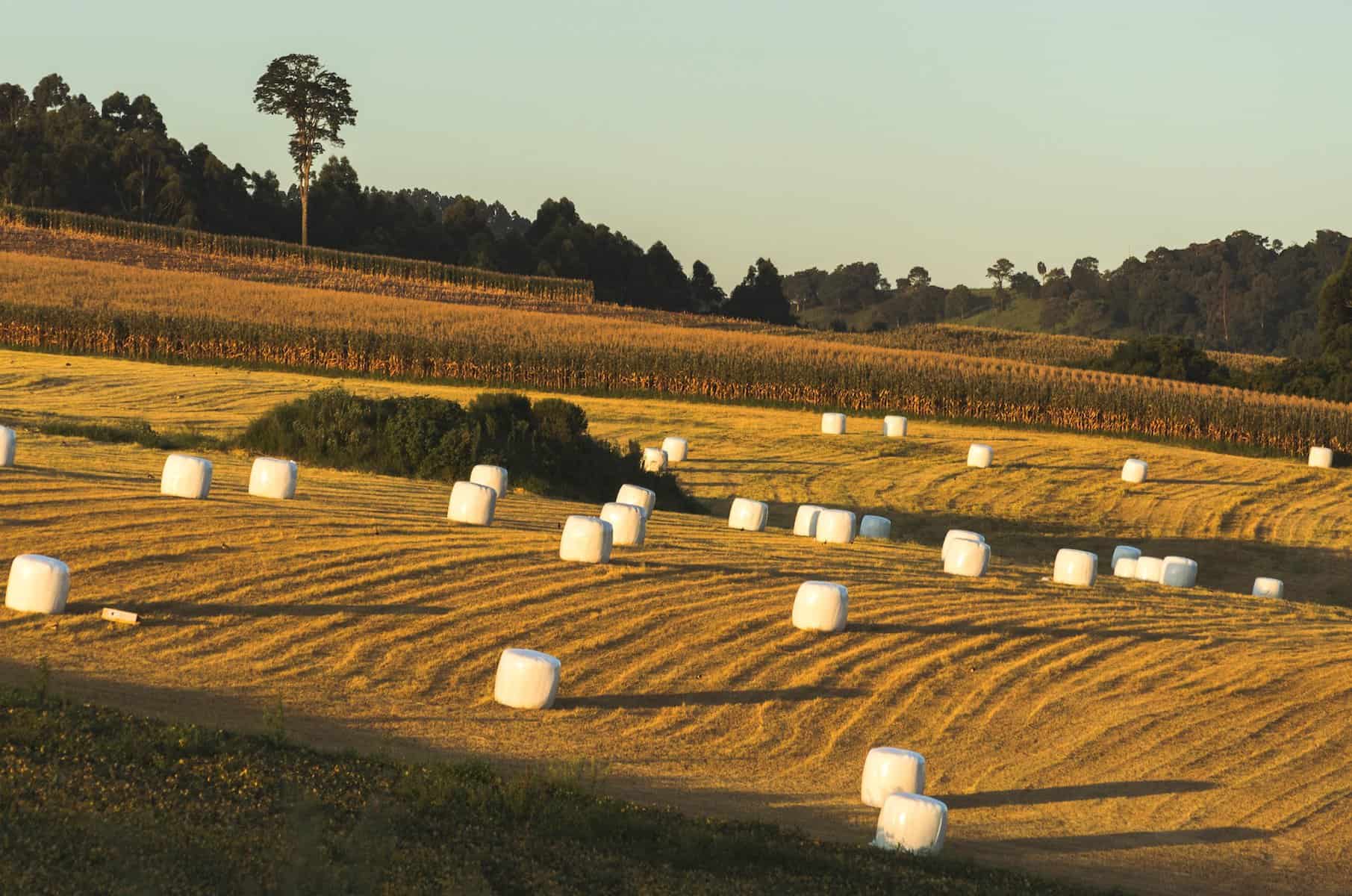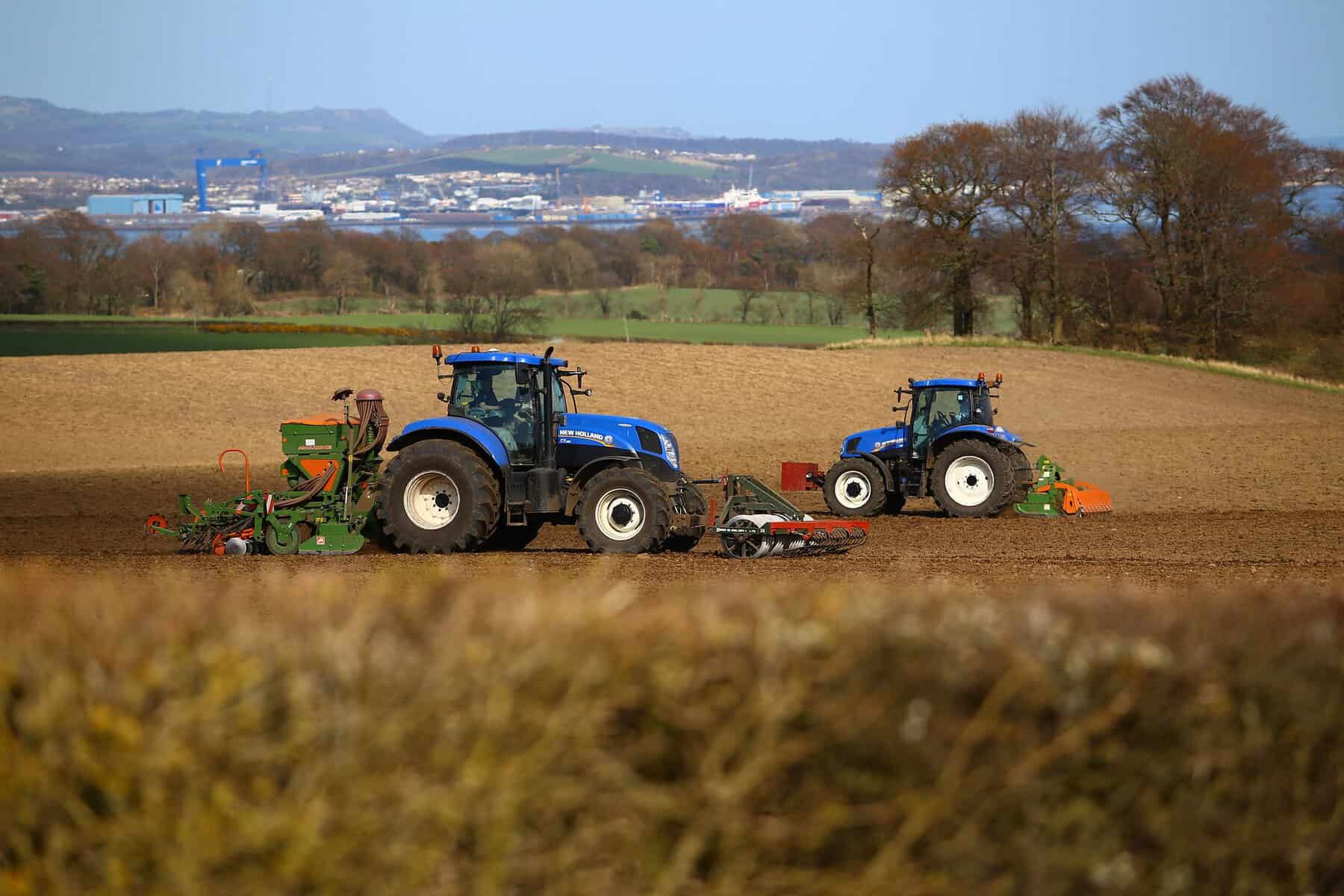
Hay farming may seem like a very simple venture to chase, but in reality there are a lot of facets to it that very few people know about.
This is why for today’s article we decided to teach you everything you need to know about hay farming.
Through this article we hope to educate you on what you need to start hay farming, what you should look out for and most importantly, what no one tells you about it.
So, if you want to find out more about hay farming then keep on reading because we’re just getting started.
What is Hay?
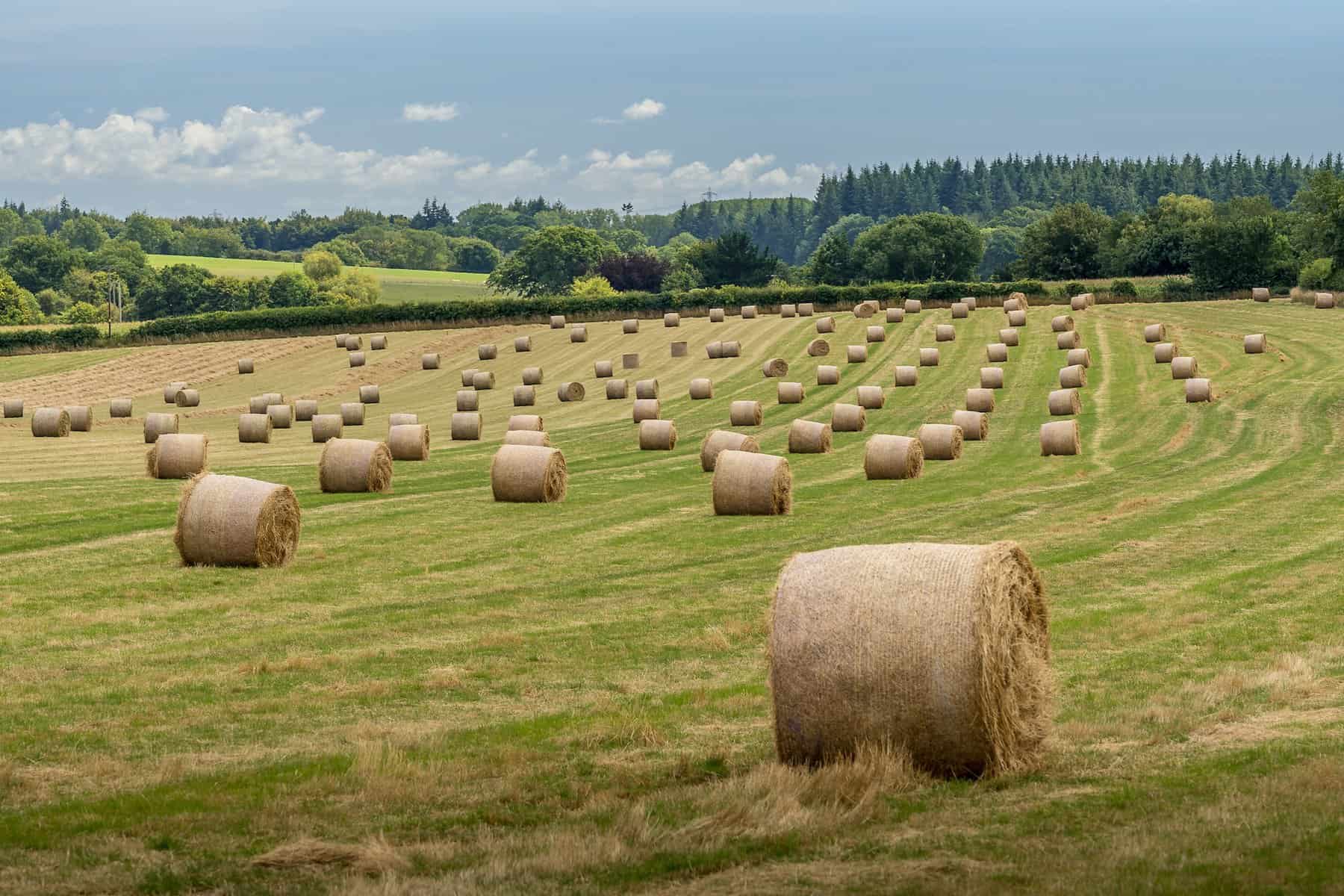

Hay is, in essence, just like any other plant. But, in order to prepare it to be served as animal feed, it needs to undergo the following processes:
- The cutting process
- The drying up process
- The storing up
As far as what plants you can use as hay, there are a lot of different options for you to consider, including but not being limited to the following:
- Ryegrass
- Timothy
- Brome
- Fescue
- Bermuda grass
- Orchard grass
- Clovers
- Alfalfa
The main factor that goes behind which plant you should use is the location you want to work in. For example, in Iowa the most commonly used plants are the alfalfa and the clover.
Hay Versus Straws
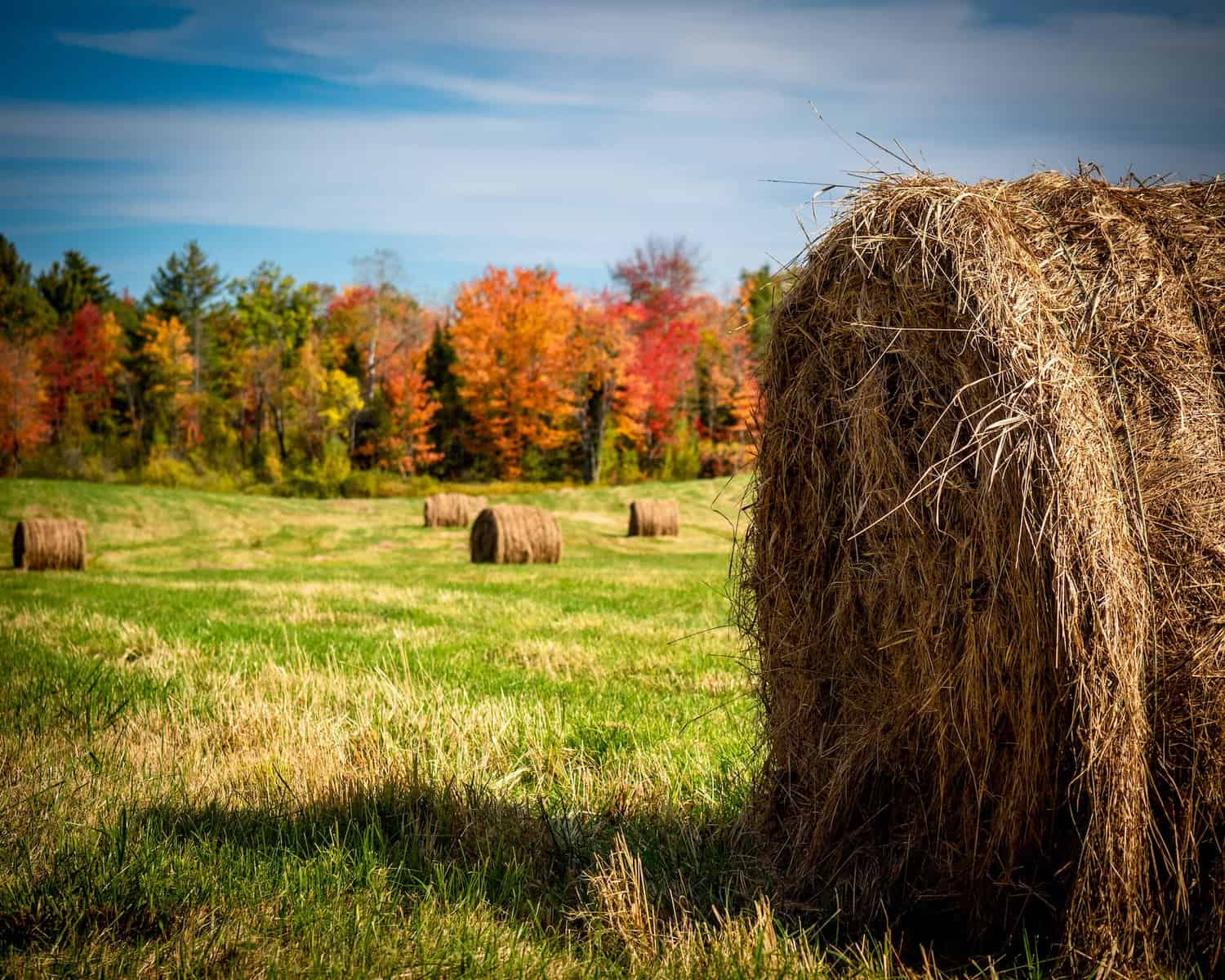

A lot of people believe that hay and straws are all the same thing, but they’re sadly mistaken.
Hay is made out of the stems, leaves and seed heads of plants that are fresh. Hay is then cut and baled only when it reaches its most nutritional value, when it can be used to feed the livestock.
Straw on the other hand may also be made out of stems and leaves, but it is cut right after the plants have been allowed to mature.
As such, straws have a very low nutritional value, so it is not recommended to feed them to your animals.
Instead, straws are used as bedding for animals, especially so considering just how soft and comfortable they are for them.
The History of Hay
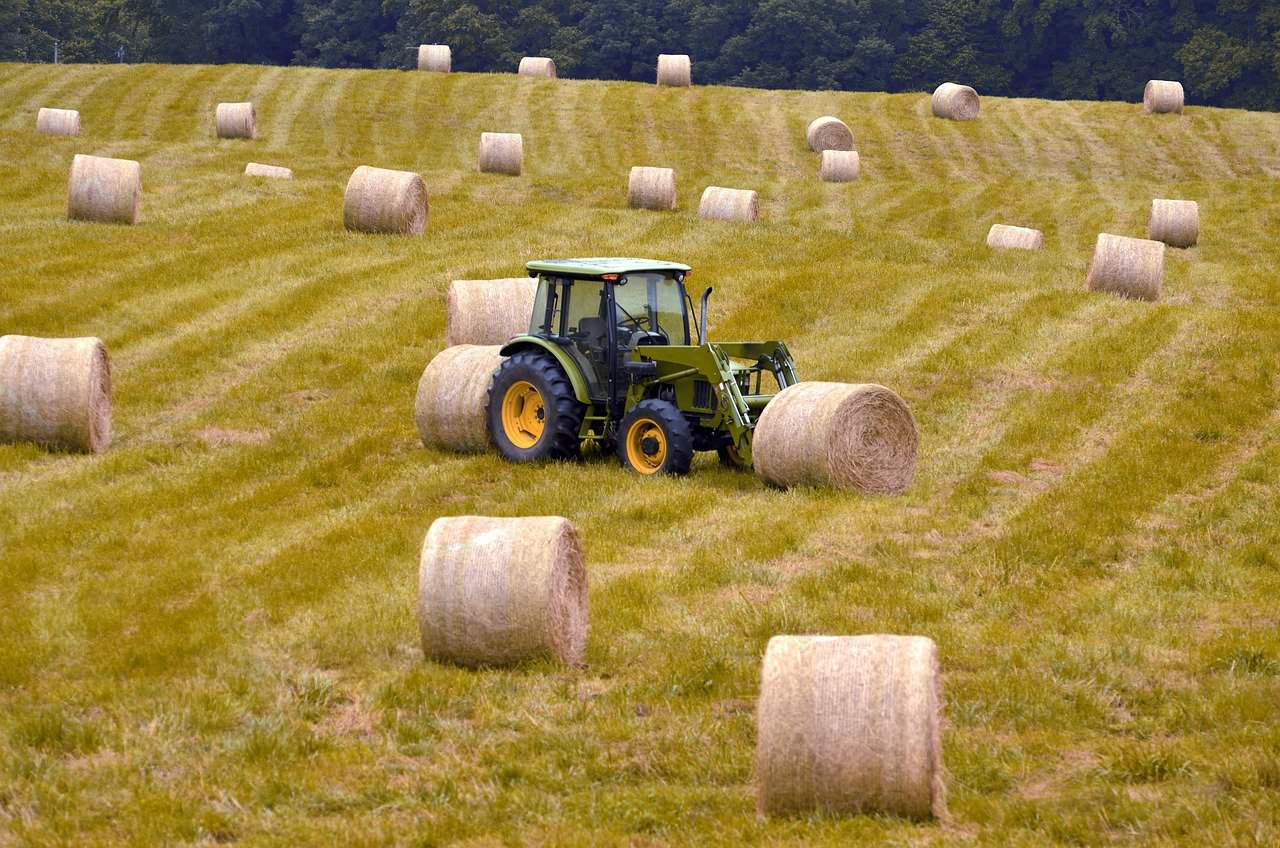

Ever since man first tamed the wild animals that mother nature gave birth to, we have been using many different plants to feed them.
The very first farmers would cut down the prairie grasses and use them to feed their livestock.
Around the 20th century, by far the most popular grasses to be used as hay were timothy grass and clover.
It didn’t take long before Alfalfa replaced both of those grasses though, completely taking over in Iowa even to this day.
Still, it is believed that alfalfa is native to central Asia, where it was also used back in the day to feed animals.
Alfalfa spread quicker than ever before after farmers realized just how easy to grow and nutritious it was for their animals.
Nowadays, alfalfa is the main plant used for hay, and while that isn’t to say that no other plants are used anymore, it is still the uncontested most popular choice for most people.
How Crops Become Hay
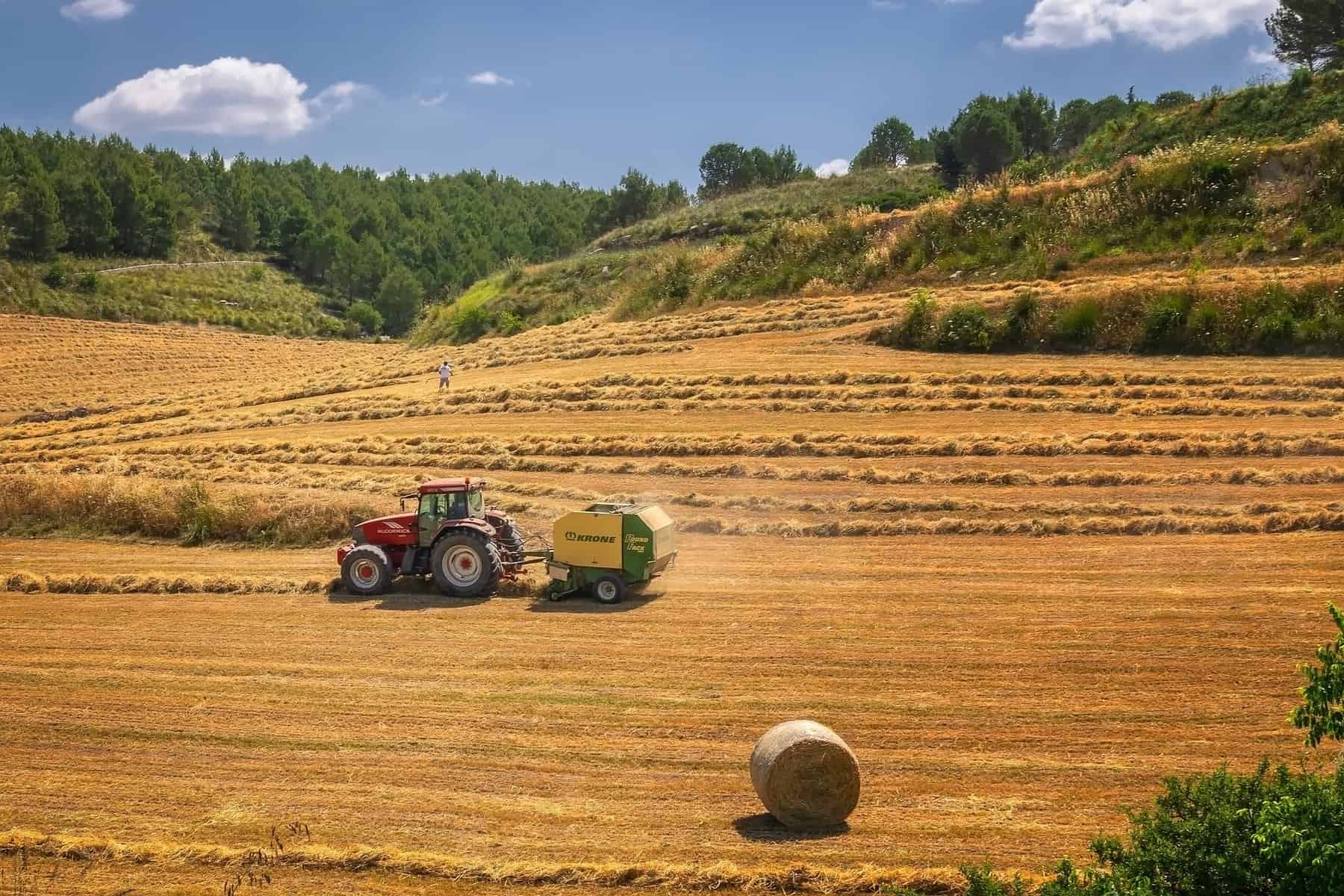

As mentioned previously, in order to turn your crops into hay, you just need to follow the following steps:
- You need to cut them up
- Dry them up next
- Bale them
After this point, you will need to store them in such a way as to make sure that they will hold onto the nutrients for an extended period of time.
Keep in mind that storing the hay is actually the most important part of the process, as the moment that hay becomes wet it loses all of its nutrients.
With that being said, here is what you should know about each step in the process:
Cutting Hay
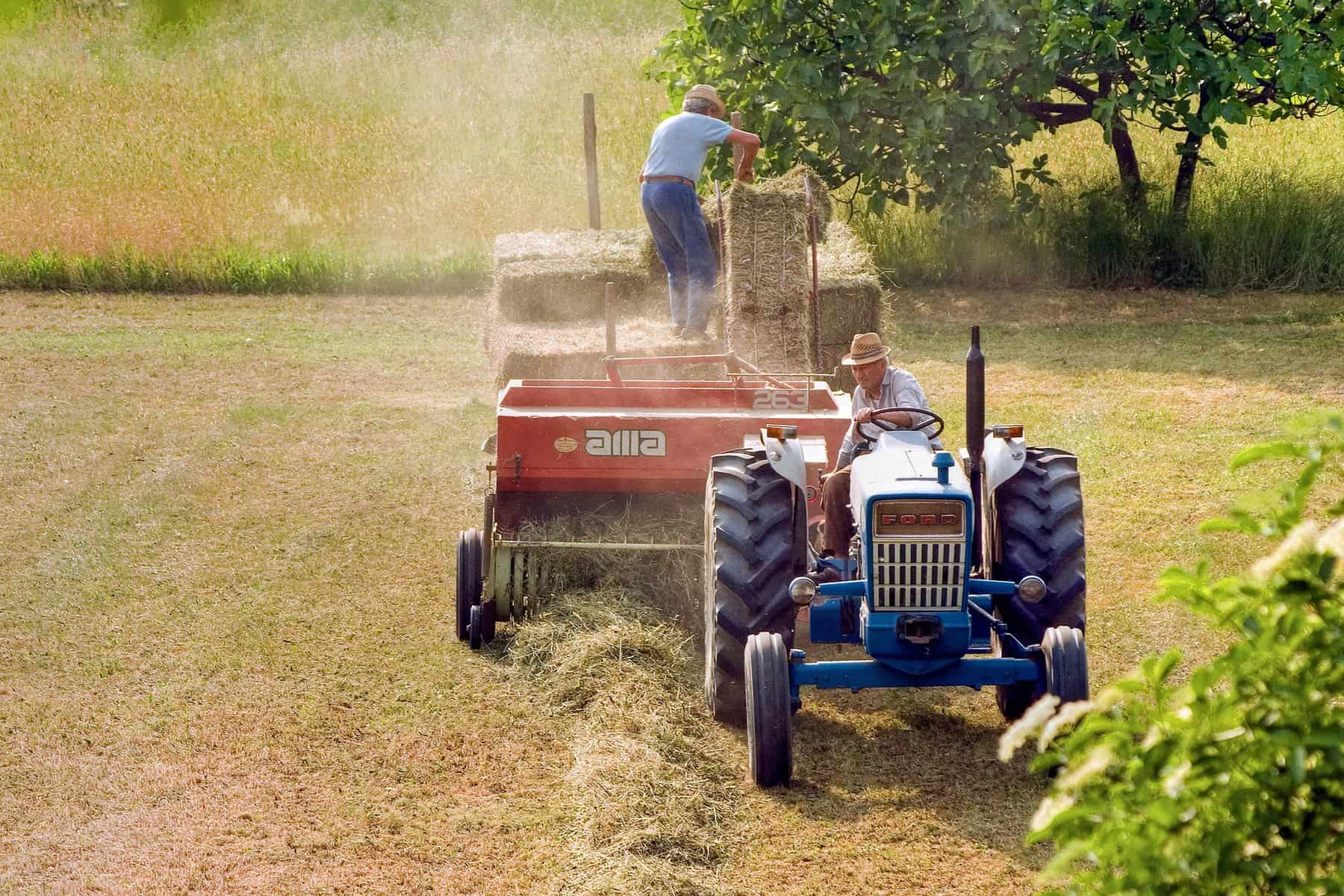

When it comes to cutting the hay, there are more than a handful of ways that you can choose from to get the job done:
- By hand – This is by far the most commonly used practice, it has been done for thousands of years now using hand-held tools such as the scythe for example
- By horse-drawn machines – This method was first introduced around the 19th century as a response to people owning larger crops of land than ever before. During this time period a lot of different hay mowers were invented that were meant to be pulled with horses
- By machine pulled by a tractor – As soon as tractors were invented, hay mowers were also improved upon so that they could be pulled by them
Drying Up the Hay
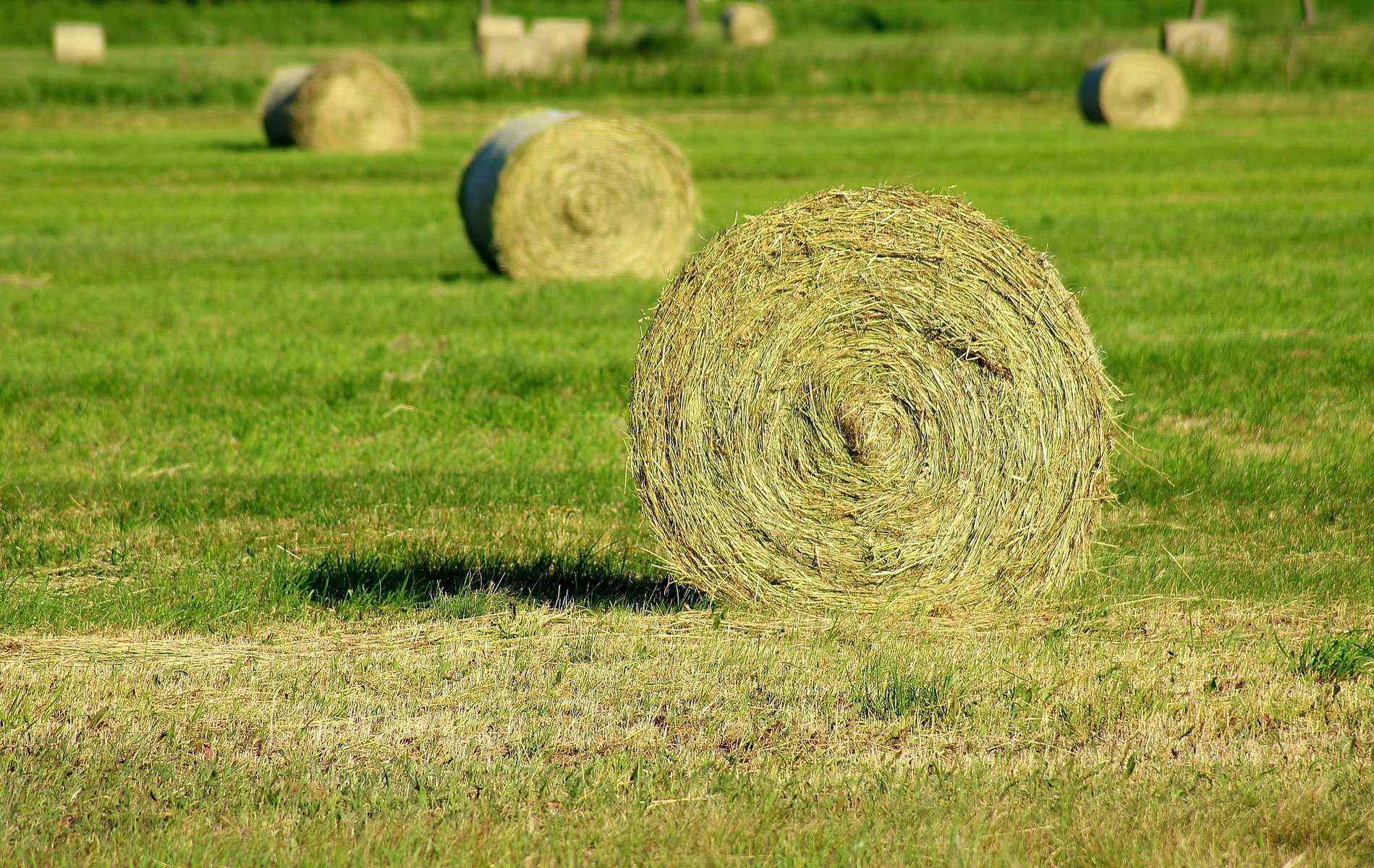

Before you can even think about drying it the hay, you should consider baling it.
That’s because when the hay is cut, farmers leave it in the field and they allow it to partially dry. The farmers will then gather up and rake the hay together into what is referred to as windrows.
Keep in mind that any sort of moisture will completely destroy your hay here, so yes, if it rains during this time frame you will lose out on a lot of hay.
Just a little rain will simply slow down the drying process, but too much of it will cause the hay to begin to spoil in the field which is the opposite of what you want.
Baling Hay


Interestingly enough, baling equipment has been around since the late 1800s. But these early machines were nothing like what we have today.
In fact, the baling machines from back in the day were stationary, and so you had to pick up the hay and take it to the machines to get it baled.
You would either carry the hay by hand or you could technically use wagons to move the hay to the hay balers, where the machine would then press the hay into square bales.
By the time the year 1930 rolled around, hay baling equipment evolved to the point where it could now be pulled by tractors around.
As such, you would no longer have to worry about picking up the hay from the ground and instead you could just move the machines to where you had the hay in the first place.
This was incredible for the farmers for multiple reasons:
- It saved them a lot of time
- It saved them a lot of energy
- It made the process easier for them
Storing Hay
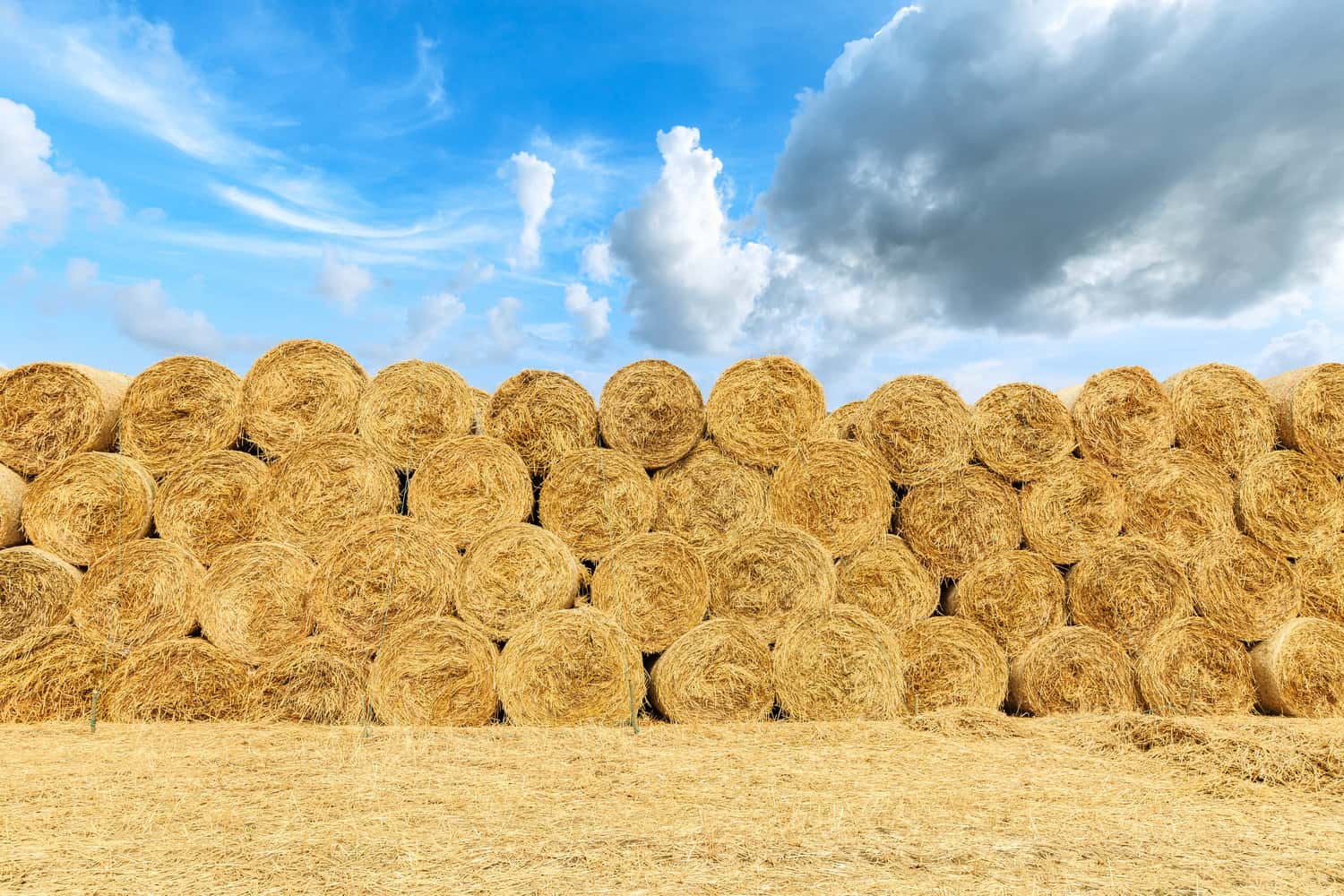

Stacking is known as the oldest method of storing hay, to the point where we can’t say for sure when it was first used.
Still, what we do know is that back in the 1840s and 1850s, these stacks would sometimes be used as housing for the animals, although this wouldn’t last for long.
A few decades later, the farmers would build large barns that would be able to store more than just tools and seed.
These large barns would also be used to store the hay which would usually be stacked in the center of the place.
By the time the 1900s came, loose hay would be stored in the barn, and the hay would then be carried by wagon to the barn where it would be stored into the hay loft.
Interesting Facts About Hay
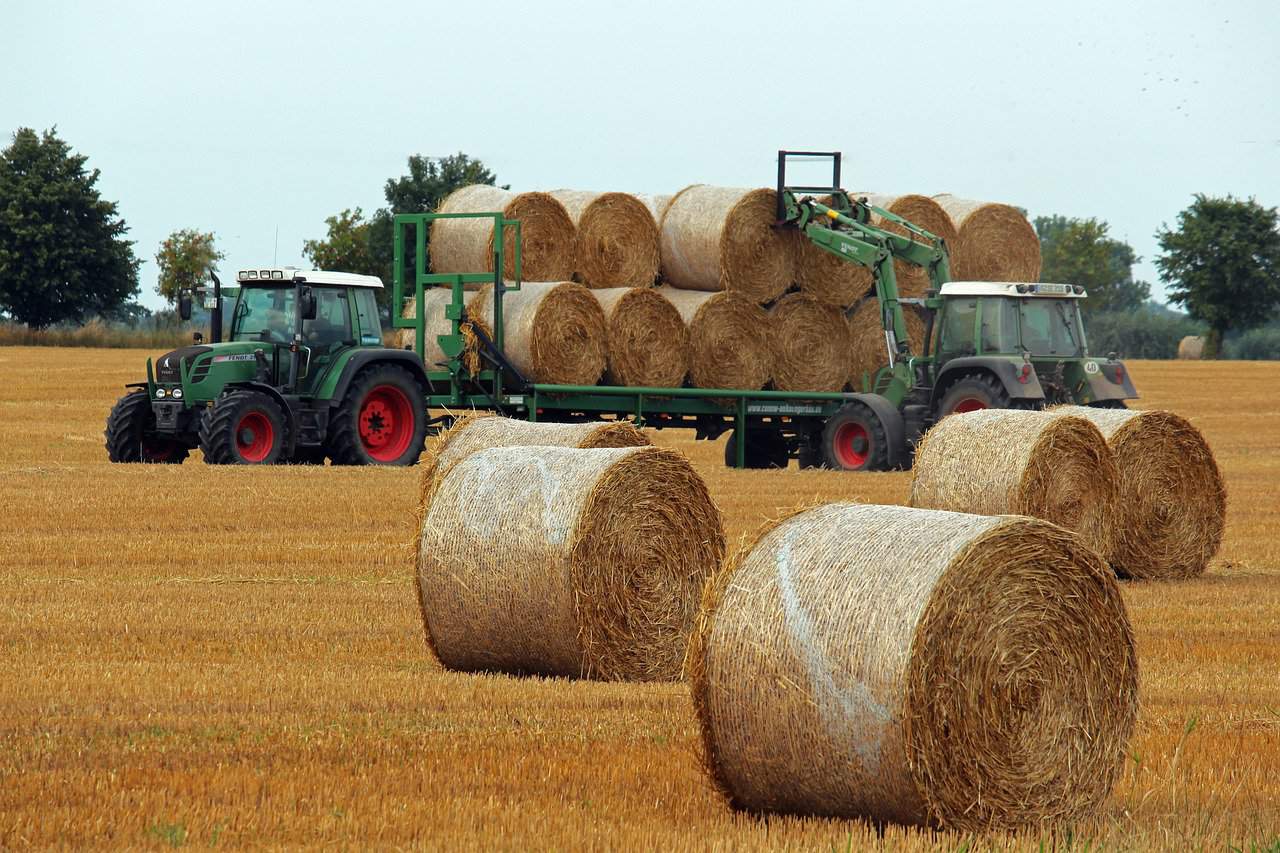

In this brief segment we will guide you through some of the most interesting fun facts we could find relating to hay.
For example, how many acres of hay were harvested in Iowa back in the day:
- In the early 1900s, as much as 2,577,000 acres of hay were harvested
- In the year 1957, 3,744,000 acres of hay were harvested, breaking records that would not be surpassed even to this day
- Nowadays, in the year 2016, only 910,000 acres are stored nowadays in Iowa, so you could technically say that the business’s hay days are over by now
Another interesting bit of trivia we have in store for you is how many tons of hay were produced in Iowa in the following years:
- In the early 1900s, 3,608,900 tons were produced
- By the time the year 1957 rolled up, a record of 7,938,000 tons of hay were produced
- By the time 2016 rolled around, less than 3,210,000 tons were produced
Last but not least, we would like to mention how the value of the hay crop changed in Iowa over those years:
- In the early 1900s, the value of the hay crop that was produced here reached a total of $23,458,656
- By the time the year 1957 rolled around, the value was increased to $123,039,000
- As of 2016, the value more than doubled reaching a total of $294,915,000
Hay Farming Today
The processes we’ve mentioned so far may sound a bit prehistoric by now, but keep in mind that not much has changed as far as what you need to do to prepare the hay for usage.
Still, because you do have access to more advanced technology and equipment, here is what you will need to know:
Preparing the Soil
Preparing the soil is actually a lot easier than you’d think. You just need to do the same thing you would do with any other vegetable crop.
Farmers will test the soil to determine if any fertilizers need to be added. After this point you will add the fertilizer, if needed.
Next up just get rid of all of the weeds on the field, since their presence alone will make it difficult for your plants to grow.
Planting and Growing the Plants
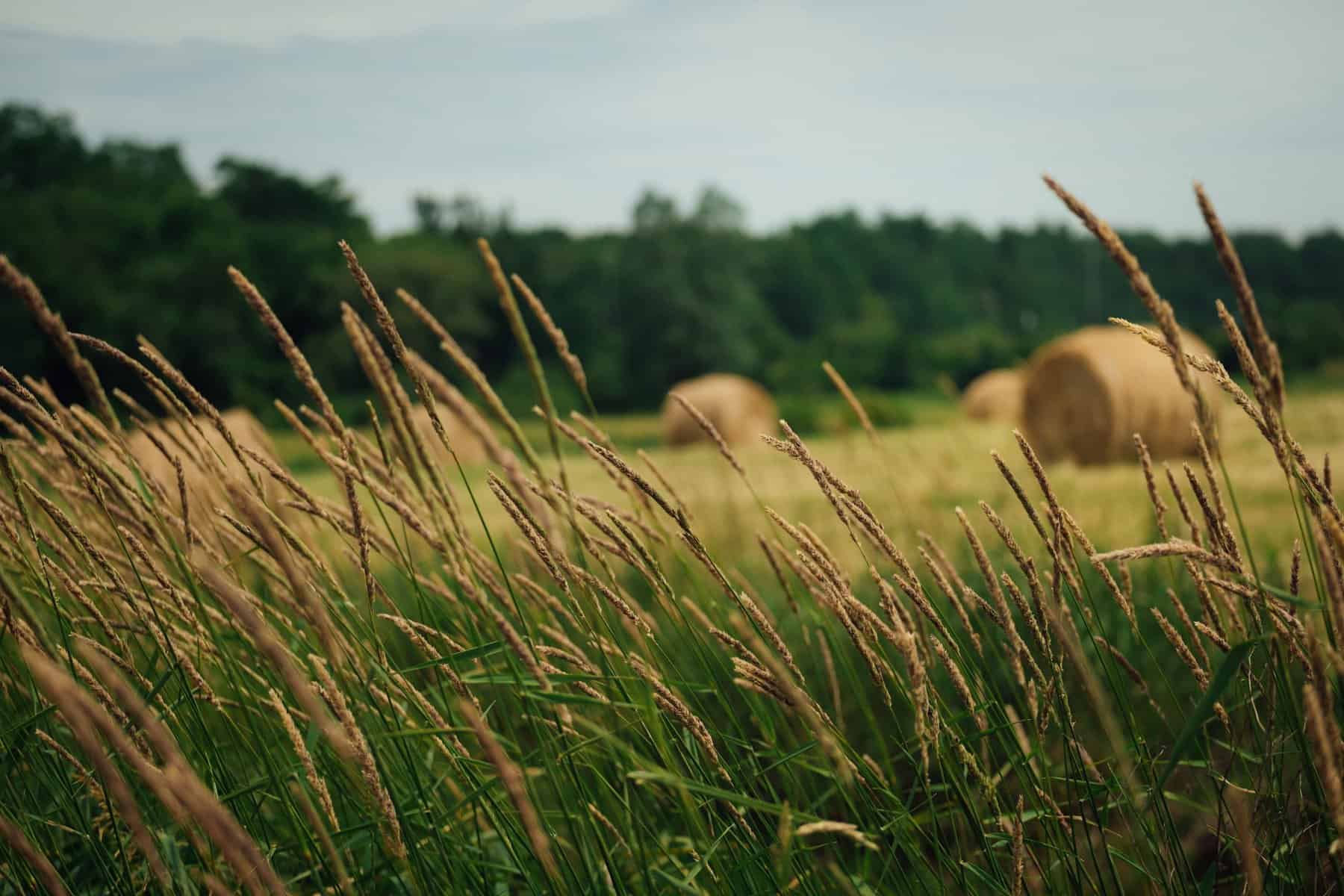

If you do plan on reusing the same field over and over again to grow hay, you will not need to worry about replanting every year.
But if you do plan on using hay as a part of a crop rotation, you will need to plant them on a yearly basis.
With that being said, the hayseed can be a mixture of multiple types of seeds, including the following:
- Alfalfa (as we mentioned previously, it’s the number one pick for most people)
- Clover
- Timothy
As far as spreading the seeds is concerned, you can do it in one of two ways:
- You can spread it by hand – this option is preferred for small areas
- You can use machines such as grain drills to get the job done – This is better for larger areas
Cutting Up the Hay
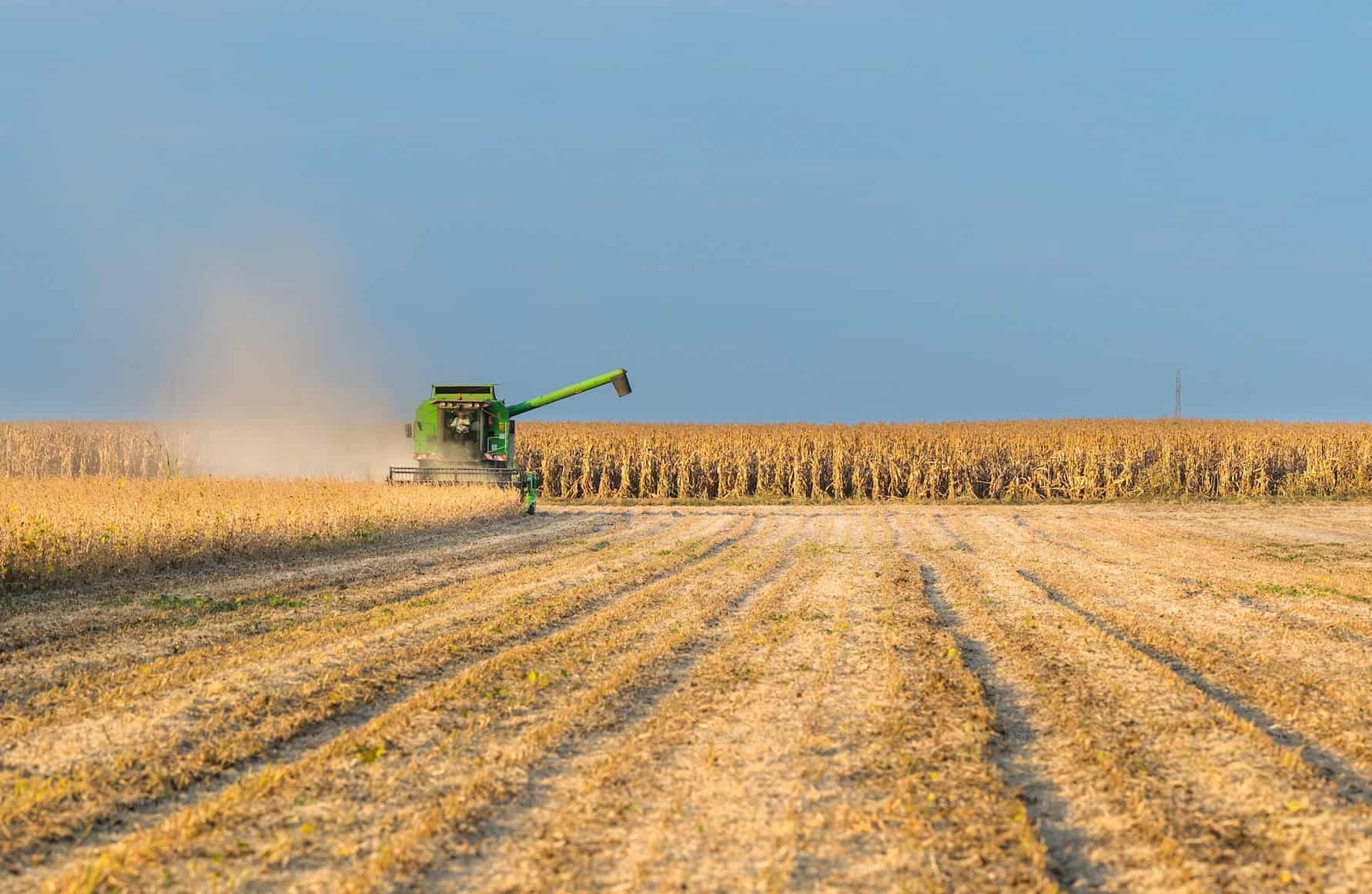

This is the fun part, the part where you will be able to cut it all down and make the most out of it.
But when exactly should you start cutting up the hay? Well, it should be done specifically when it has the most nutritional value.
This is usually around 60 days after, although it can differ depending on the seeds you used to make them.
The good thing about cutting up the hay is that you can use the same field multiple times per season.
Nowadays, you will find two different types of mowers that are actively used to cup up the hay. These mowers can also be pulled by machines:
- Rotary disk mowers – These are the mowers that have those signature round discs attached to them
- Sickle bar mowers – These are the mowers that have a bar full of teeth that is used to cut down the hay
Stacking and Baling the Hay
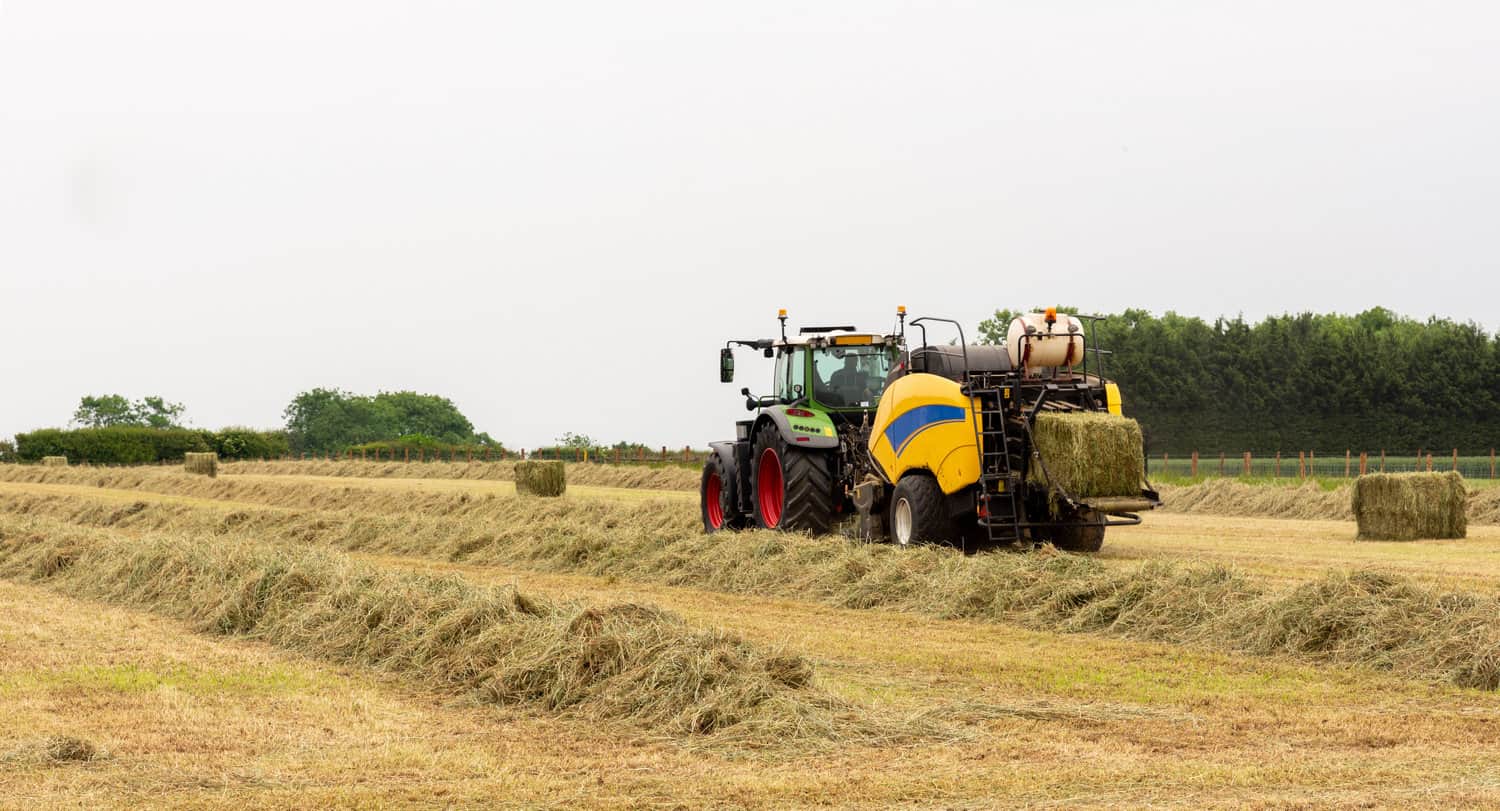

Back in the early 20th century, hay baling equipment was still in its infancy, but as more and more time passed, things started to change for the better.
Before long, a machine was invented that could make round hay bales. That may sound like an insignificant change to you, but this was a revolutionary invention to say the least.
While the original machinery was great and all, it definitely lacked in more than one way, which is where a group of students from the Iowa State University came into play.
They were the ones that came up with an improved design for this machine, which was improved even further in the mid-1960s by an engineer named Wesley Buchele.
He created a huge mechanical baling machine that could easily produce a giant, 700lbs or 320kg round bale.
Using this machine, the farmer could harvest the plants, bale and transport them to the livestock without ever even laying a hand on the hay.
Transporting and Storing the Hay
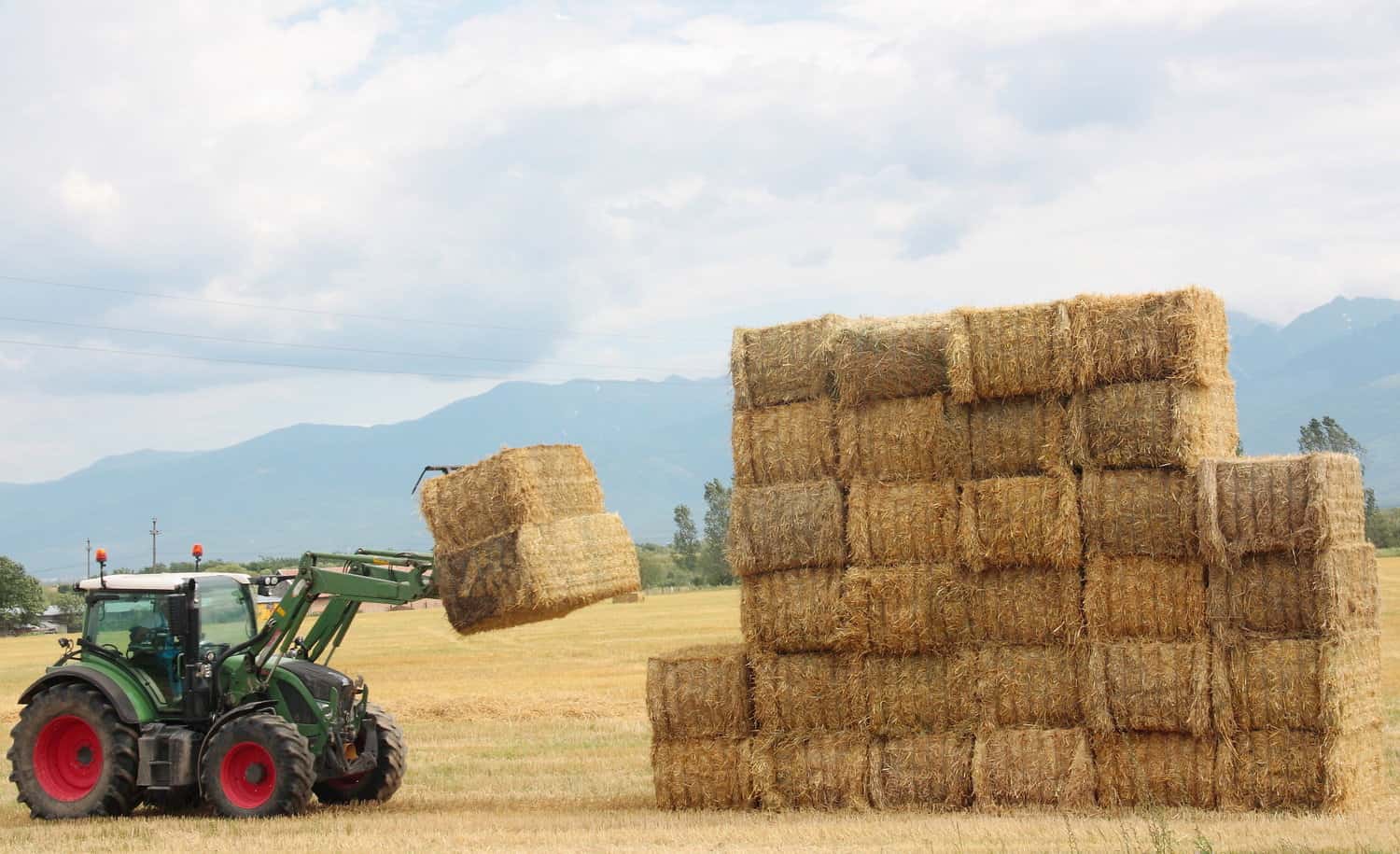

Transporting the hay is usually done in one of two ways:
- By moving each bale with a tractor – the only downside to this is that it takes a very long time to do
- By putting multiple bales of hay onto a wagon and pulling it to where you need it
As far as the storing process is concerned, regardless of whether you go for square or round bales, you will need either a barn or a different building with a roof to keep it dry.
If you keep it outside, you will have to constantly worry about the weather damaging the nutritional quality of the hay.
The Different Uses of Hay
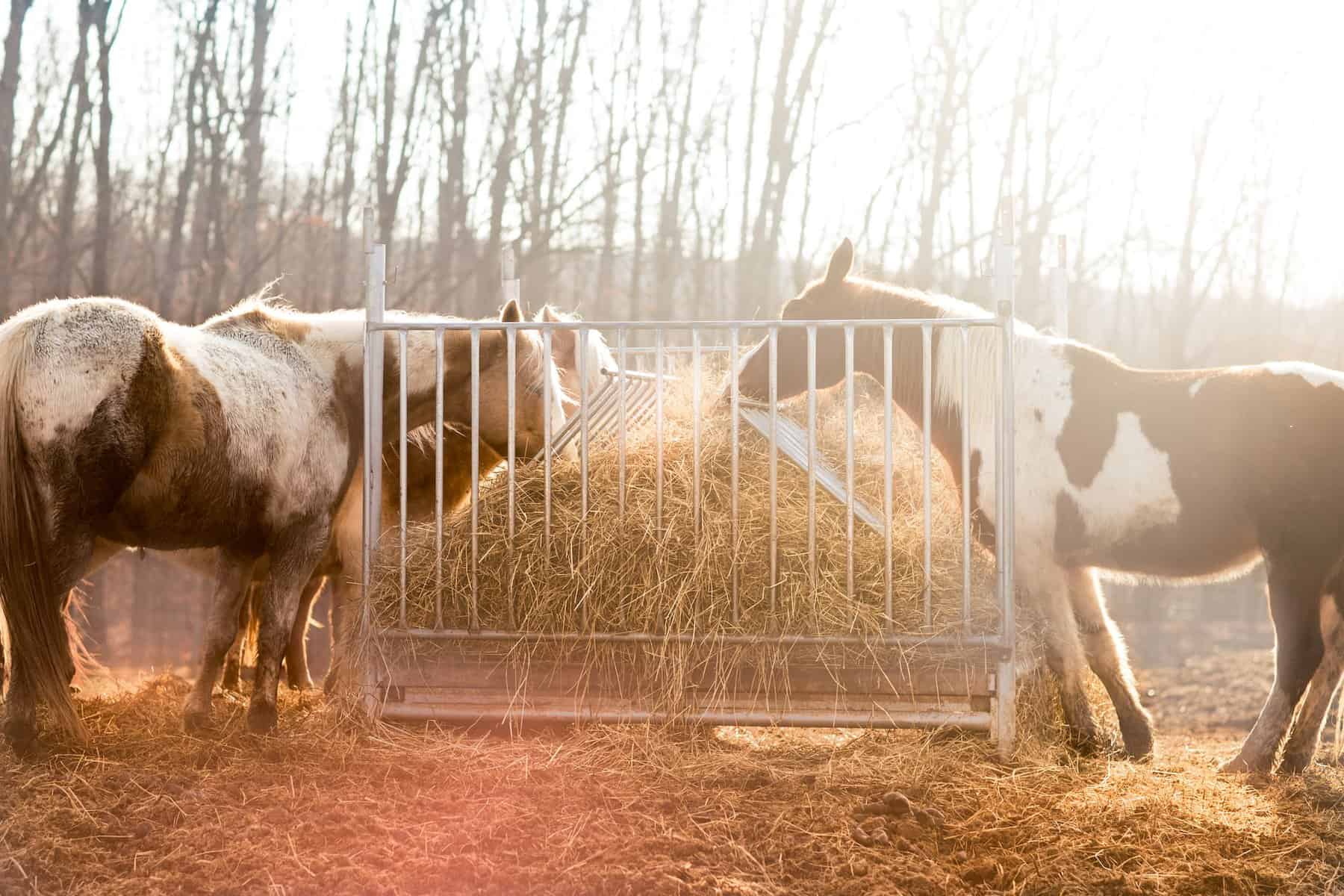

For the most part, hay is only really used as feed for livestock. With that being said, you can use hay as feed for most any animal on the farm, including:
If you can’t get your livestock to graze or be on a pasture, feeding them hay is the only other option you have.
Depending on the animal you are feeding though, they will need different nutritional requirements.
So, for this part you will need to carefully monitor the food that your animal is consuming and look out for any signs that something is wrong.
If your hay is rotten, your animals will either not eat it or they will consume it and get sick from it.
Conclusion
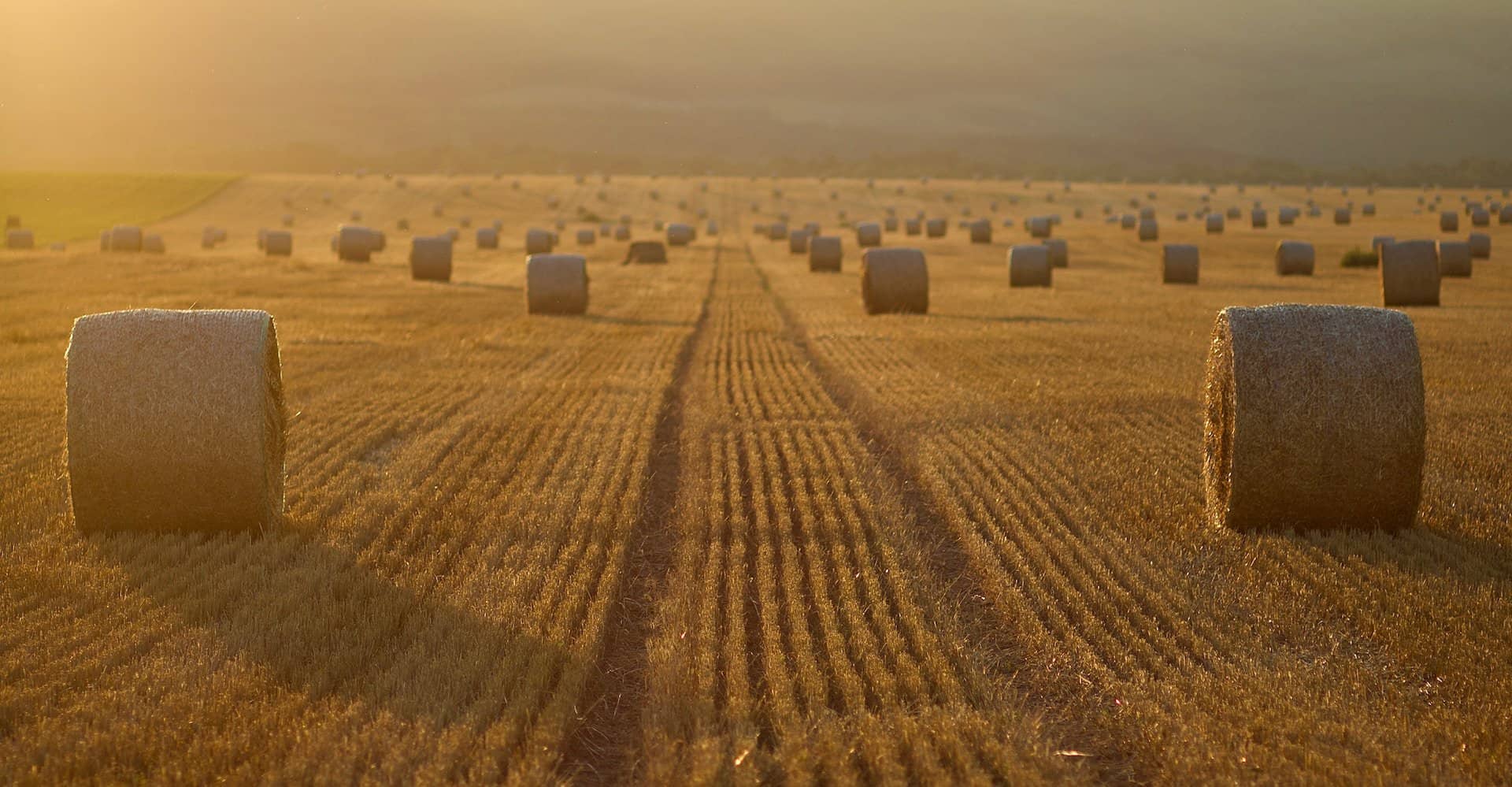

Hay farming is a simple yet enjoyable process that has been actively taking place in most every farm since the beginning of the industry altogether.
As such, it shouldn’t come off as a surprise that if you do plan on raising livestock, you will eventually have to either contact a hay farmer or farm the hay yourself.
Becoming a hay farmer will save you on a lot of bills per year, and it can also serve as a good business venture. At the same time, it does take quite a lot of money to set up everything, so keep that in mind also.
Frequently Asked Questions (FAQ)
Is Hay Farming Profitable?
Growing Hay is quite expensive, so you can’t guarantee the fact that you will be earning a profit every year. Still, the more you do it, the more connections you make, and as such the higher the chances of you making a profit get.
How Do I Start Farming Hay?
Here are the steps we recommend you take before you start farming hay:
- Choose the perfect field to grow your plants on
- Plant the perfect seed variety for you
- Check the weather at all times
- Cut the plants at the perfect time, when their nutritional value is skyrocketing
- Start up the drying process
- Be smart about the bale storage
How Hard is Hay Farming?
Haying can either be a challenge or the easiest thing in the world, it is entirely dependent on the tools you use.
If you use expensive equipment, you won’t even need to touch the hay at any time, but if you take the cheap way, you will need to do everything by hand which can be quite difficult.
How Does Hay Farming Work?
In order to make hay, farmers need to do the following:
- Plant the species you want to use
- Cut it up right before it fully matures
- Let the plants dry up
- Bale them
- Transport them either to the livestock or to the barn
How Many Times Can You Make Hay in a Year?
You can harvest hay two to three times per year, depending on your location and the climate your fields are forced to go through.

